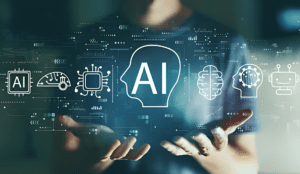Artificial intelligence (AI) is a fascinating field where the breakthroughs and new business ideas it generates are just as appealing as the technology itself. Nevertheless, the task at hand is to guarantee that these advancements produce advantages or profits of an unparalleled scope in contrast to those of their forerunners. To quickly bring incredibly inventive ideas to market, necessitates a startup culture. While there is a widespread belief that AI has no bounds, it is important to recognize that AI has limitations.

The head of immersive ventures and commercialization for artificial intelligence at LG Electronics’ startup incubator, LG Nova, Shilpa Prasad, says that the speed of AI advancement has been, at best, mediocre. Within organizations, there is a complicated network of channels that must be traversed in order to get any AI-driven proposition to market. In a recent interview with MIT Sloan Management Review, Prasad highlighted the difficulties of nurturing AI innovation in established corporate settings, pointing out that the appetite for risk-taking is constrained due to the possible disruption it may create to existing workflows.

This sentiment is shared by innovators across the industry. Sam Curry, vice president and chief information security officer of internet security company Zscaler, highlights the necessity of AI-enhanced solutions to show measurable and long-lasting gains in problem-solving abilities. Curry argues that the addition of AI alone does not improve a solution by itself. He emphasizes the need for an AI-driven solution to be both efficient and effective when evaluated in terms of development, quality, sustainability, safety, and security, among other factors.
In AI innovation, there is a clear need for a startup culture, emphasizing the need to break through conventional obstacles and quickly realize ground-breaking ideas. The industry’s need to strike a balance between innovation and risk aversion means that adopting an entrepreneurial and dynamic attitude will continue to be critical to AI’s development trajectory.
Even for the most tech-savvy firms, Prasad warns that the road to commercializing tech-driven ideas is still a difficult one. Large Language Model (LLM)-savvy startups frequently find it difficult to understand how to apply these advances to real-world problems. Curry focuses on the crucial concerns of AI-driven products, such as their viability given the state of knowledge today and their long-term worth prior to commoditization. Technical challenges are fine, but they must be solvable and similar to problems that have been solved before.

Within LG, Prasad’s AI-focused startup team has been devising productivity tools for the company’s extensive global workforce. She does point out, though, that corporate AI research frequently ignores important real-world issues, such the labor gap in industrial settings.
AI’s omnipresence, though advantageous, presents challenges. For new ideas and enterprises, AI’s widespread use lowers entrance barriers, claims Reilly. It takes deliberate differentiation to stand out in a potentially crowded market, though, as accessibility also heightens competition.
The risk of commoditization looms large. Curry cautions that a solution’s economic value may be diminished by its general availability and consistent quality, which could result in lost investments or market bubbles.
As Curry emphasizes, AI serves as a tool for entrepreneurs and innovators who lack initiative or sentience. Reaching these milestones in AI sciences is critical to unlocking AI’s capacity to innovate and revolutionize industry.
According to Reilly, generative AI is a powerful tool for brainstorming that facilitates the crystallization of ideas. It emphasizes the necessity of human intervention in the innovation process, but it does not actually execute innovation.
Terrell highlights how AI may lessen human bias in product iterations and increase test-and-learn chances. By combining data-driven insights with serendipity and identifying patterns in large datasets, Thompson emphasizes how AI has the potential to systematize innovation.
The difference between artificial intelligence and human creativity is still vital, though. Terrell issues a warning against relying too much on AI, pointing out that it is not as capable as human minds at coming up with novel concepts or creative intuition.
As AI develops, it will continue to play a supportive role in innovation, enhancing rather than completely replacing human creativity. A key element in navigating the changing landscape of startup innovation is striking an exact balance between using AI’s capabilities and utilizing human brilliance.




